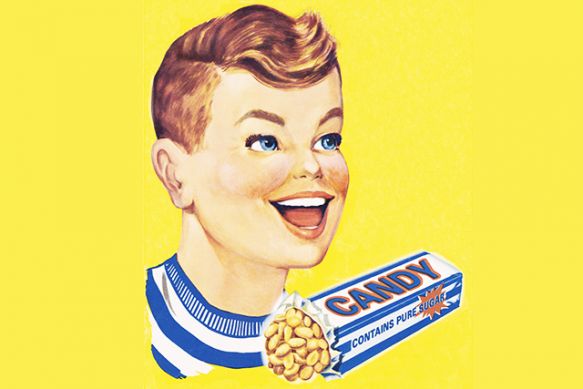
© Getty images
It's no secret that teenagers love sugar. One-fifth of the daily diet of a typical American adolescent comes from added sugar - more than any other age group. Half that sugar comes from sweetened beverages such as soda, energy drinks, and sports drinks. But there's more that sets a teen's relationship with sugar apart from an adult's sweet tooth. Not only do teens eat more of it, but it affects their brains differently too. That could have repercussions far more severe than a few cavities.
New research from Yale Medical School shows that sugar may change the still-developing adolescent brain by increasing blood flow to the parts of the brain that control reward and executive function.
"This study is the first step in understanding what is occurring in the developing adolescent brain in response to drinking sugar," says Ania M. Jastreboff, assistant professor of internal medicine and pediatrics at Yale and a lead researcher on the study. The findings of Jastreboff's team were presented at the American Diabetes Association's Scientific Sessions last week and will be published soon.
The researchers asked a small group of normal-weight adolescents and adults to drink 75 grams of glucose and then performed brain scans to examine each group's response to drinking the sweetened water. The team found that adolescents, compared with adults, exhibited increased response in regions of the brain associated with reward motivation and executive function - areas that help humans connect past experience with present action.
"We hypothesize that these striking differences in brain response to glucose ingestion might contribute to adolescents' higher consumption of added sugars," Jastreboff says, adding that further studies are necessary to determine how these findings affect adolescents' eating behavior. The researchers hope future studies will analyze whether this sugar's effect on the teen brain is contributing to skyrocketing obesity rates.
The
Centers for Disease Control and Prevention reports that since 1980, the percentage of 12- to 19-year-olds who are obese has more than tripled, rising from 5 percent to 21 percent in 2012. Overall, more than a third of children and adolescents are now overweight or obese. As for the cause, in recent years
many experts have blamed our excessive consumption of sugar, especially fructose. Besides contributing to obesity, sugar has also been
linked to high blood pressure and diabetes. More Americans now believe that between sugar and marijuana,
the sweet stuff is more dangerous.
For Jennifer Harris, director of marketing initiatives at the Yale Rudd Center for Food Policy and Obesity, the new findings echo a 2013 study she helped conduct that showed that
adolescents' brains are especially excited by advertisements for food, compared with other products marketed to them. That scientific understanding may be relatively new, but food and beverage companies discovered this years ago, she says, and make a habit of marketing sugary drinks more heavily to teens than to adults.
A possible solution, Harris says, is a soda tax. Researchers learned from the institution of tobacco taxes that adolescents are disproportionately more likely to reduce their consumption of the taxed product, because they typically have less discretionary money to spend.
"The main thing is that [food and beverage companies] should not be pushing products that have no nutritional value in their marketing to adolescents," she says.
Amazing that sugar causes so much harm. We will all have to stop eating carbohydrate just in case the textbooks are right and this stuff turns to sugar during digestion.